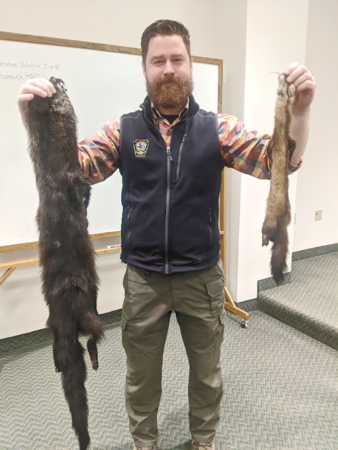The Pennsylvania Game Commission is currently exploring the idea of returning one of the last extirpated native mammals back to its native landscape in the Pennsylvania wilds. In recent years another mammal, the fisher, was reintroduced and with great success. I have personally seen fishers on several occasions, and I have talked with others who have also seen them. There were some who related to me that they were concerned that the fisher might be a threat to our turkey population, but studies showed that they rarely ever ate turkeys and were not considered to be a threat to the turkey population. Now as the commission is about to bring back the marten, a few have again raised the question concerning the threat to other species like small game and turkeys.
In an effort to learn more about this subject, I attended a seminar last week in State College at our annual Pennsylvania Outdoor Writers Conference. Tom Keller, a furbearer biologist for the Pennsylvania State Game Commission, conducted the seminar. Tom did an excellent job explaining the Pine Marten’s history and biology.
The American Marten, also called a Pine Marten, was once common in Pennsylvania forests but was eventually extirpated by the early 1900s due mainly to unregulated market hunting and trapping and the deforestation of the state. The marten prefers structurally complex forests in quantity and quality, and northcentral Pennsylvania fits the bill quite well. The Pine Marten is actually a relatively small mammal weighing in at two pounds, and is very similar in size to a fox squirrel or a mink.
So what do Martens eat? It’s been found that martens primarily eat small mammals like voles and shrews, but a large part of their diet is also made up of plants and insects; this makes up about 70 percent of their diet. They will, on occasion, eat birds, squirrels, rabbits, hares, and other small critters, but that is a much smaller percentage of their diet. Turkey’s, including eggs and poults, were not identified as prey items. In fact, martens have been found to coexist with many other species, like snowshoes, ruffed grouse, and wild turkeys, while sharing the same habitat.
In July, a plan will be introduced to begin the reintroduction of the marten. Strong public support, including hunters, has been documented through surveys. About 90 percent supported the idea of reintroduction, and about 8 percent were opposed. Successful reintroductions of wildlife in Pennsylvania are nothing new, with the fisher being one of the most recent. Other successful reintroductions include the elk, river otter, bald eagle, Peregrine falcon, beaver, osprey, and, in years past, the wild turkey.
Bringing back wildlife that once roamed the Pennsylvania landscape is obviously nothing new, and it seems to be working. In the near future, the Bobwhite quail may be another one added to that list. After all, who would have believed that seeing bald eagles would become an almost weekly occurrence?




